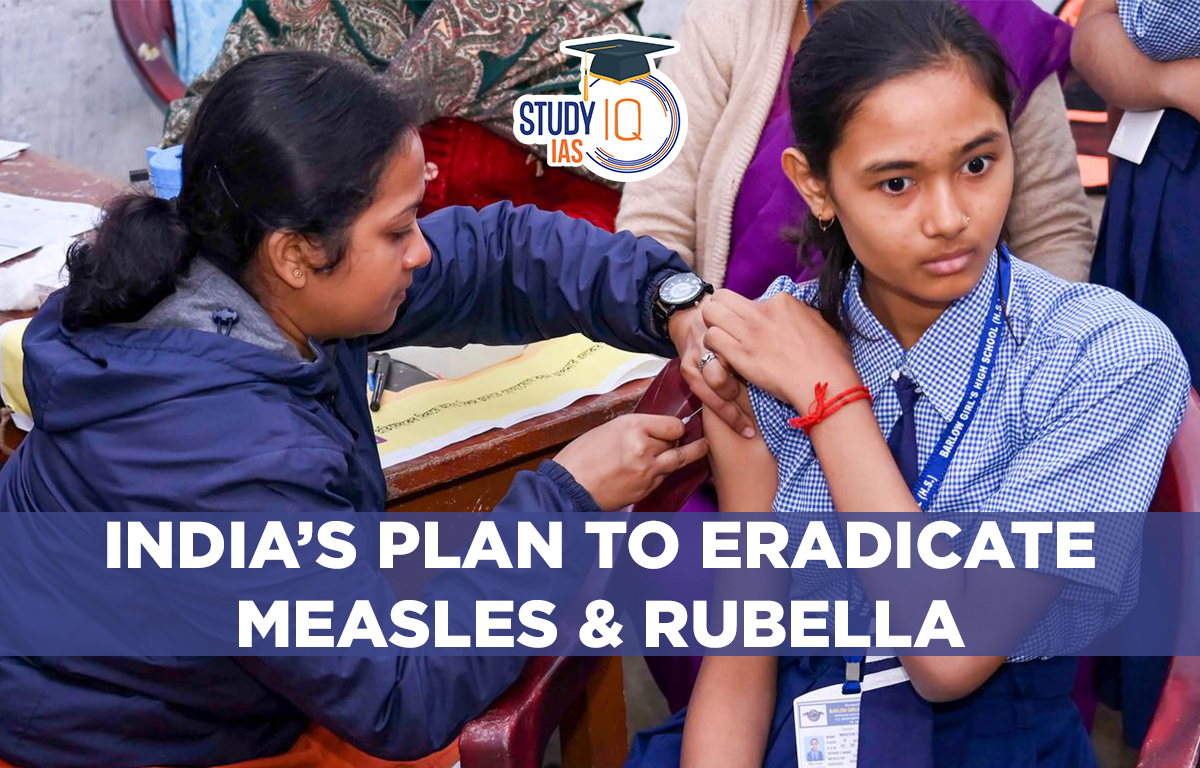Table of Contents
In News: India has set a target to eliminate measles and rubella (MR) by 2023, having missed the previous one in 2020.
More On India’s Plan to Eradicate Measles & Rubella
- India had missed the target due to a variety of reasons, worsened by disruptions due to the pandemic. An earlier target that was set for 2015 was also missed.
- In 2019, India adopted the goal of measles and rubella elimination by 2023, anticipating that the 2020 goal could not be reached.

Importance of Achieving Targets
- Role in infant deaths: The measles virus is the world’s most contagious human virus that kills more than 1,00,000 children across the globe every year.
- WHO’s statistics say that the measles vaccine is estimated to have averted more than 30 million deaths globally, in the past two decades.
- Easily preventable: Rubella is a leading vaccine-preventable cause of birth defects in children. Both of these diseases can be easily prevented by just two doses of a safe and effective vaccine.
Efforts to Achieve Targets
- Phased catch-up: India conducted phased measles catch-up immunisation for children aged 9 months–10 years in 14 States, vaccinating approximately 119 million children.
- Mission Indhradhanush: Mission Indradhanush adopted a national strategic plan for measles and rubella elimination and included rubella-containing vaccine (RCV) into the routine immunisation programme.
- Change in surveillance approach: India’s efforts transitioned from outbreak-based surveillance to case-based acute fever and rash surveillance.
- Laboratory network: To improve the detection of cases, the government has doubled the number of laboratories in the measles-rubella network.

Steps Towards Achieving Targets
- District-wise targets: Each district has to be given a target to achieve the required rate of immunisation, and conduct a robust fever and rash surveillance programme, besides testing for MR.
- Districts that are unable to achieve the targets have to be identified and additional efforts have to be made to improve their numbers.
- Ground-level support: Ground-level staff such as village health nurses, ASHA (accredited social health activists) workers, anganwadi and ICDS (Integrated Child Development Services) workers have to be given full support.
- The best way to ensure a target-driven approach is successful is to make sure that the people given the tasks are happy doing their job.
- Strengthening surveillance: Surveillance can be strengthened by finding, investigating, and collecting and testing a sample for every suspected case, in each district in every State and UT.
Mission Indradhanush
- The mission of the Ministry of Health was introduced to achieve full immunization coverage for all children (up to two years of age) and pregnant women.
- Diseases covered under Indradhanush:
- Initially, diphtheria, tetanus, poliomyelitis, tuberculosis, measles, whooping cough, meningitis and Hepatitis B were covered under the mission.
- Rubella, Japanese Encephalitis, Injectable Polio Vaccine Bivalent and Rotavirus were added in 2016.
- Pneumonia was added to the Mission in 2017 by incorporating the Pneumococcal conjugate vaccine under Universal Immunisation Programme.


 Jharkhand High Court Assistants Admit Ca...
Jharkhand High Court Assistants Admit Ca...
 Bharat Bandh 9 July 2025: Over 25 Crore ...
Bharat Bandh 9 July 2025: Over 25 Crore ...





















